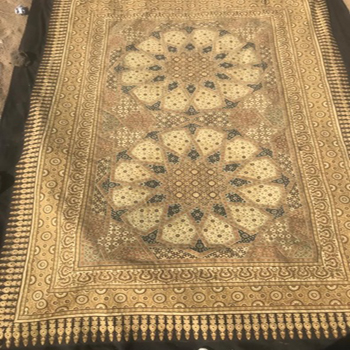
Crafts, Handlooms, Art, Interviews, Conversations
A Legacy of Ajrakh- Abdul Jabbar Mohammad Khatri
Badamikar, Aarti
Issue 07,Winter 2021
Issue #007, Winter, 2021 ISSN: 2581- 9410
The production of Ajrakh cloth in Kutch presents an exceptional story of the determination of the artisans to keep the craft alive and contemporary for markets and people in varied cultures across the world. Traditionally printed on both sides in dominant shades of indigo and madder, and characterized by their use of mordanting and multiple dyeing techniques, the ajrakh textiles derive their name from the Arabic word azrak, meaning blue. The rich patterned surface of ajrakh fabrics is achieved through a highly evolved and sequential process of scouring, mordanting, printing, lime resist printing, multiple dyeing in Indigo (blue), Manjistha (red)and distinctive washing. Dyed and printed with vegetable and mineral colours, the properties of this cloth exceed the merely aesthetic. The colours of ajrakh are believed to be in harmony with nature such that they are cooling in the heat and warming in the cold. The Khatris came to Kachchh from Sindh about four hundred years ago at the invitation of Rao Bharmalji the first who ruled the district from 1586 to 1631. The Rao gave them gifts of land and they were free to choose where they wanted to build their homes. Their family belongs to the Dhada subcaste and their ancestor, Jindha Jiva, chose the site of Dhamadka because the River Saran ran through it. A good supply of running water is necessary for different stages of dyeing and washing of ajrakh cloth. This ...
This is a preview. To access all the essays on the Global InCH Journal a modest subscription cost is being levied to cover costs of hosting, editing, peer reviewing etc. To subscribe, Click Here.



